Abstract
Anti-idiotypes (aId) reacting with anti-Lol I (Lolp I; Rye I) antibodies were detected by their ability to bind to radioiodinated F(ab')2 anti-Lol I. Sera were tested after removal of anti-Lol I and anti-heavy and light chain activity by adsorption on Lol I-Sepharose 4B and normal human serum Sepharose 4B. The binding of aId to Id was inhibited by affinity purified anti-Lol I but not by certain unrelated immunoglobulins; in some sera this binding was also inhibited by Lol I. The levels of aId were measured in serial bleedings collected over a 1 year period from Lol I-sensitive patients, allergic donors not sensitive to Lol I and non-allergic persons. In Lol I-allergic patients the levels of aId were significantly influenced by seasonal exposure to pollen and by immunotherapy with extracts of grass pollen. Moreover, in 12 out of 16 cases, there was also a significant inverse relationship between changes in serum levels of aId and of IgG or IgE anti-Lol I. Most interestingly, aId were also detected in non-allergic individuals; in this case, the levels of aId were not influenced by the pollen season. The data suggest that Id-aId interactions may play a role in the regulation of anti-Lol I antibody production.
Full text
PDF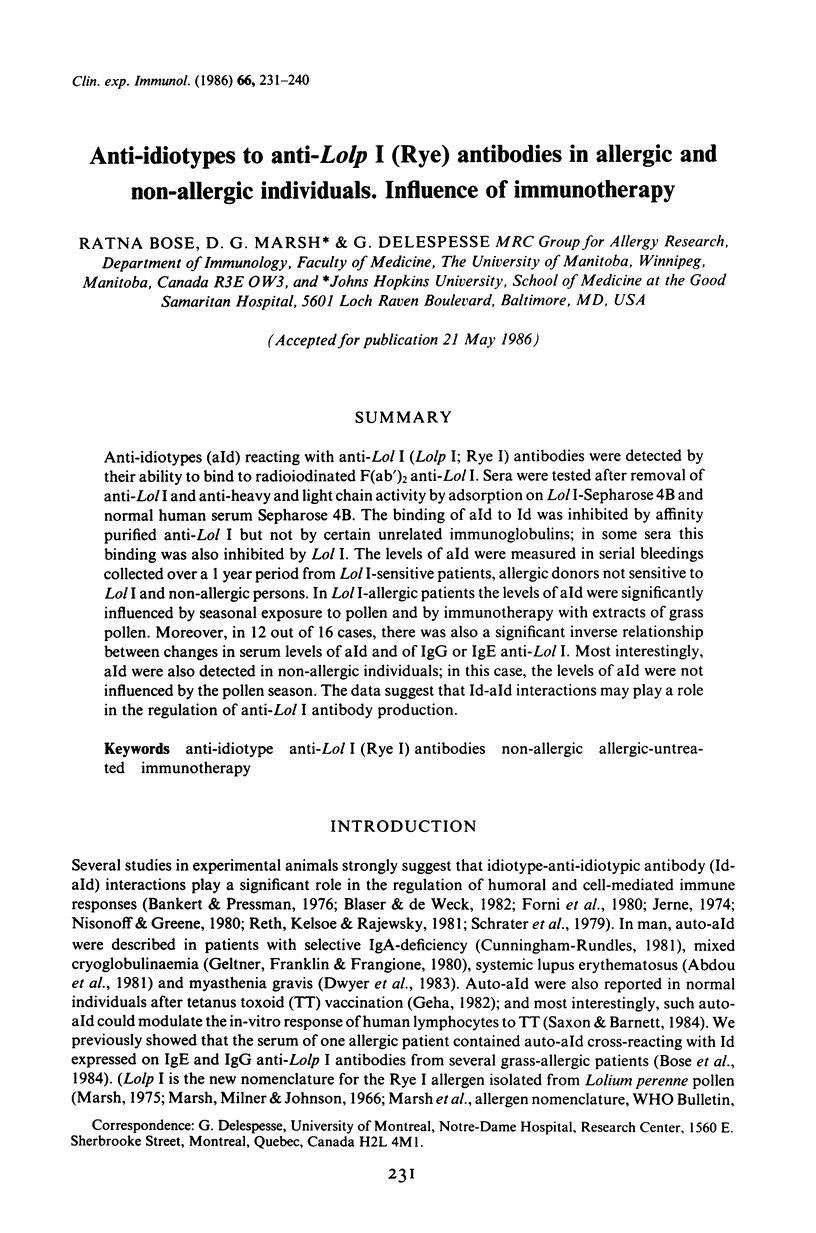
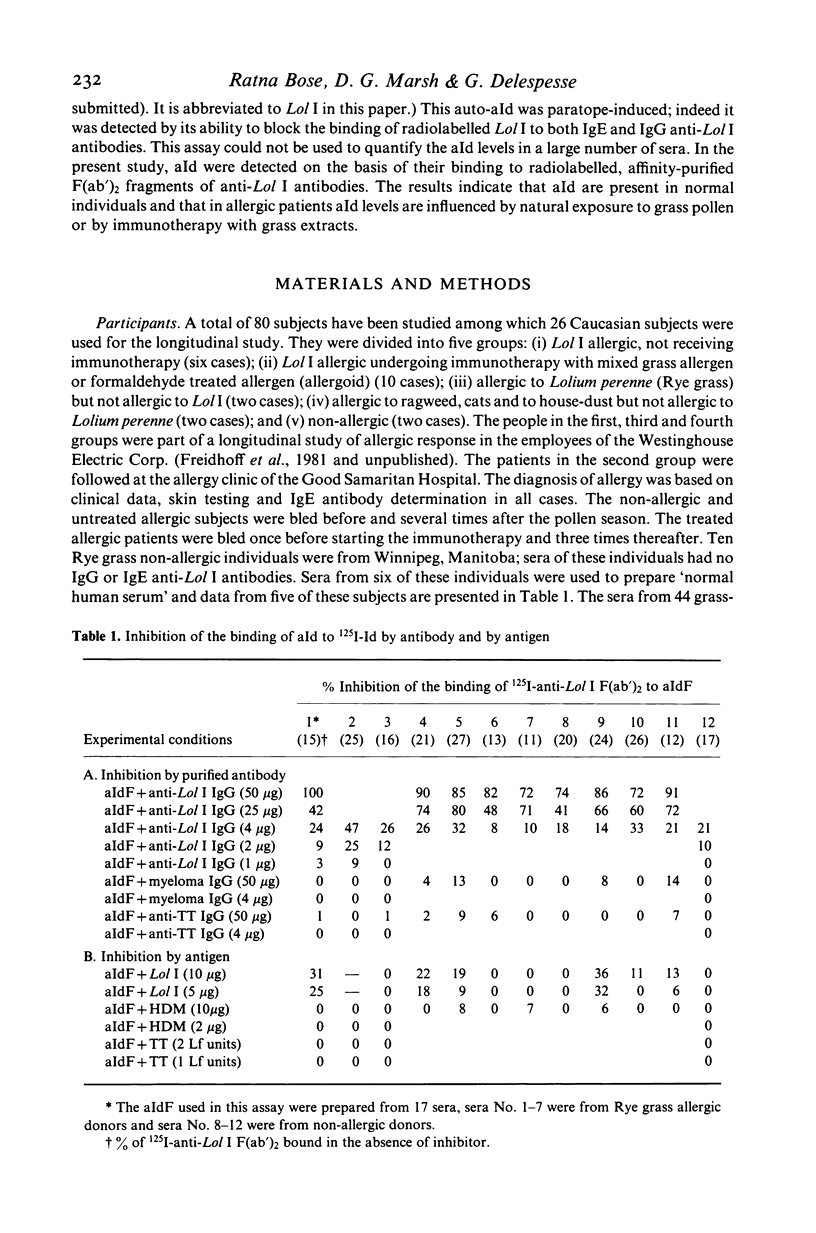
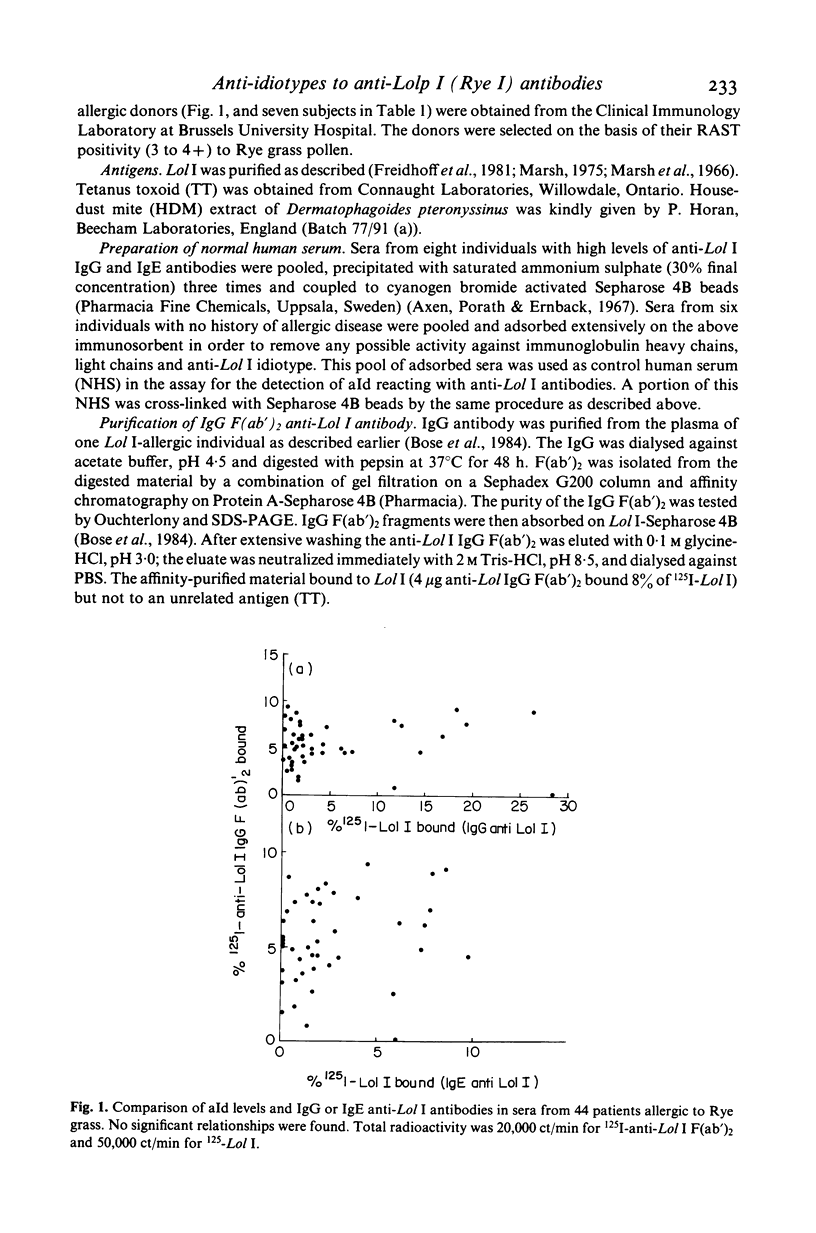
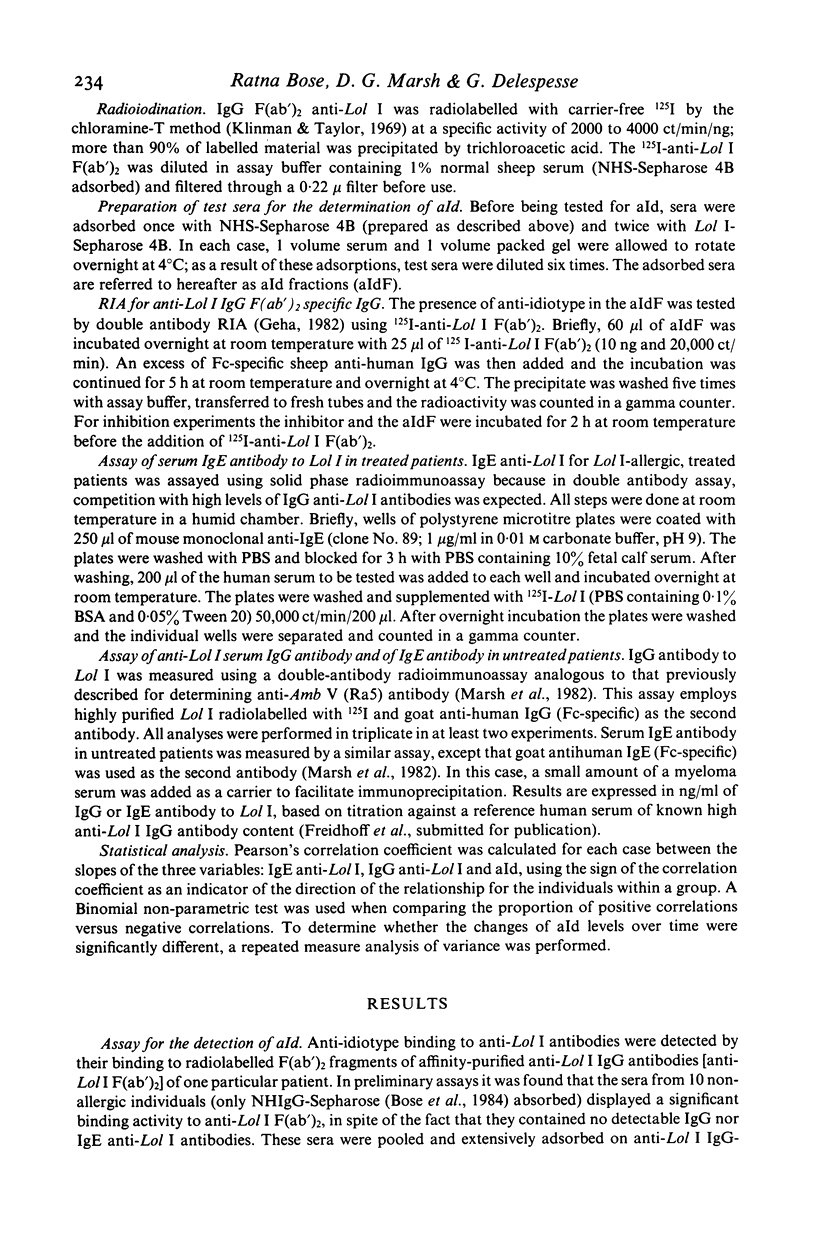
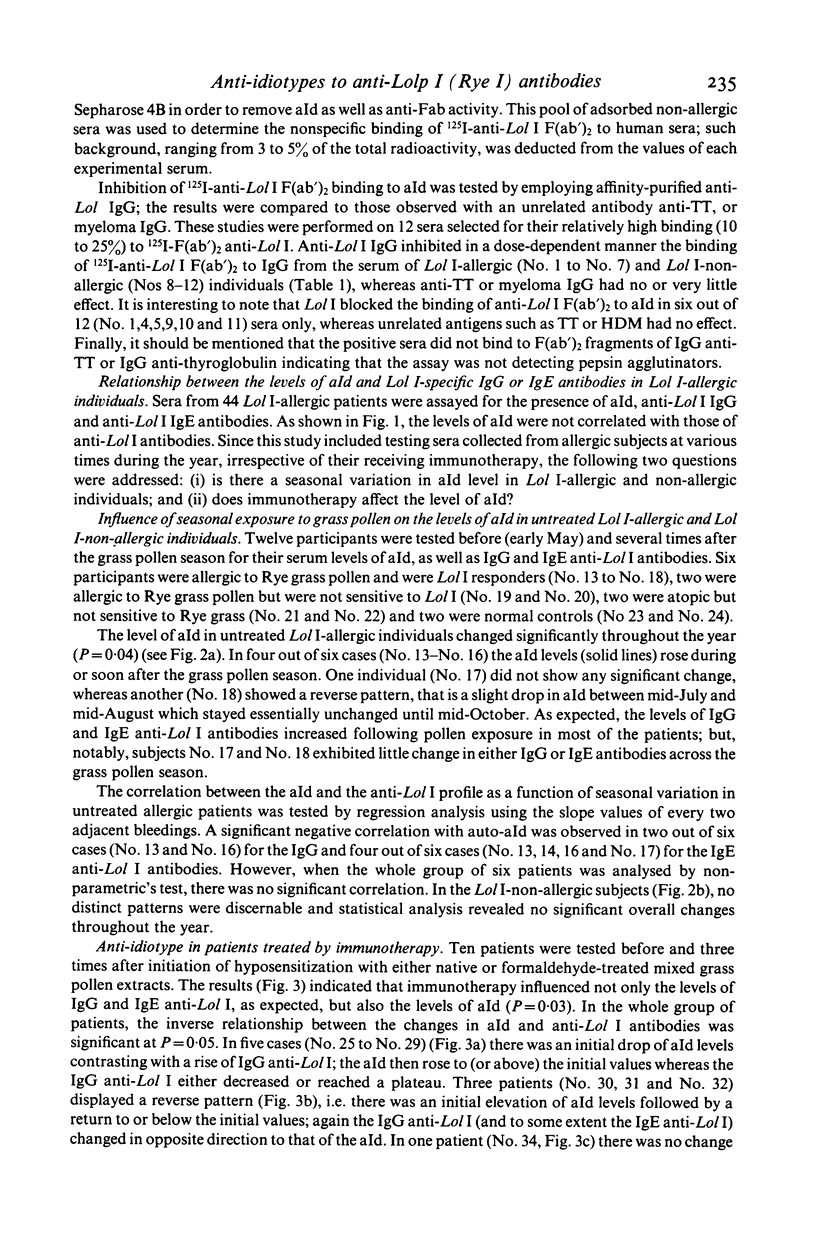
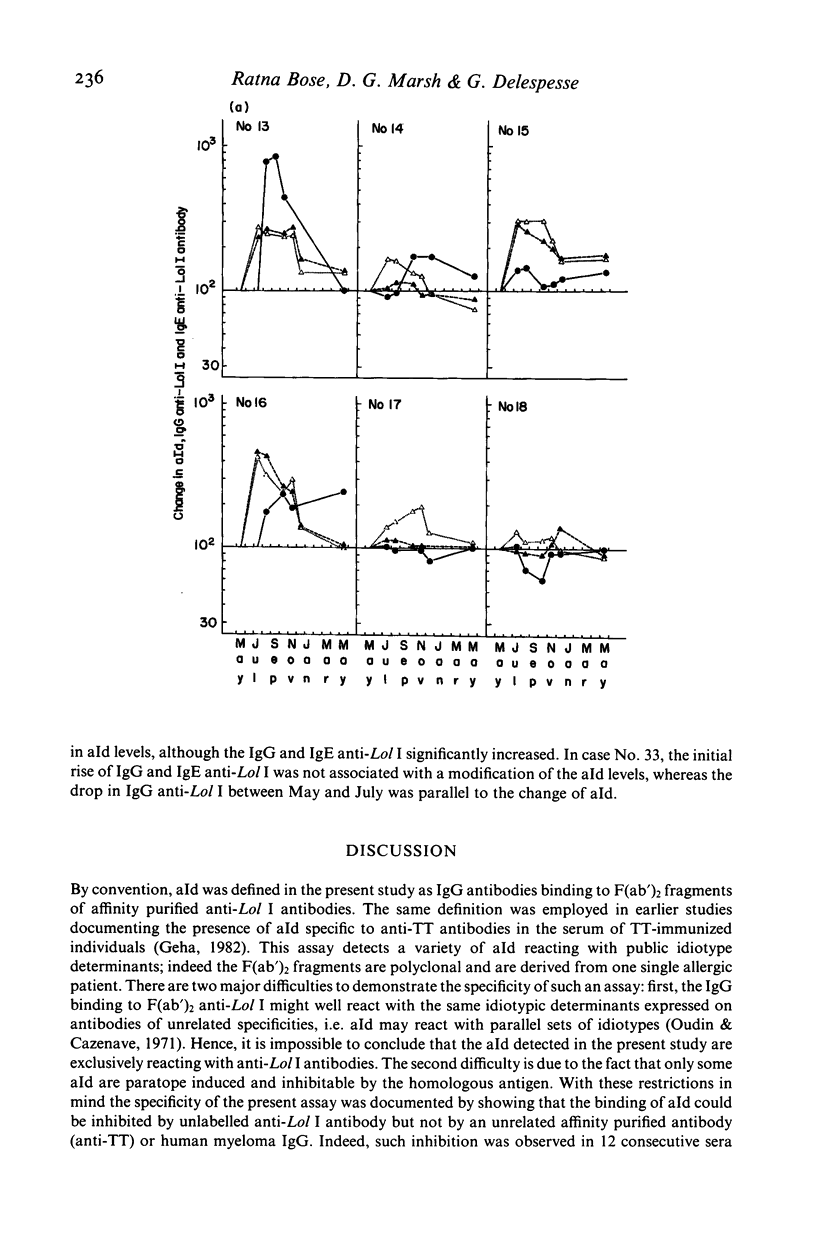
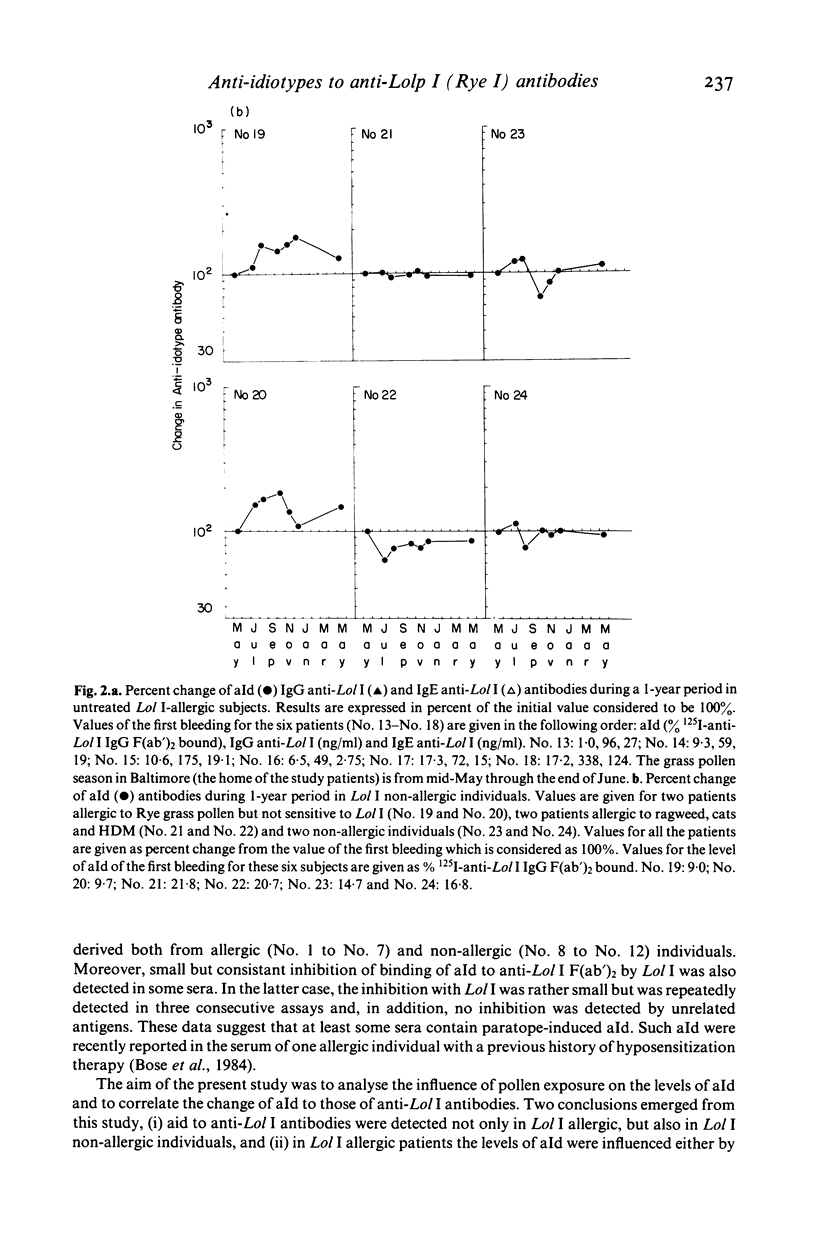
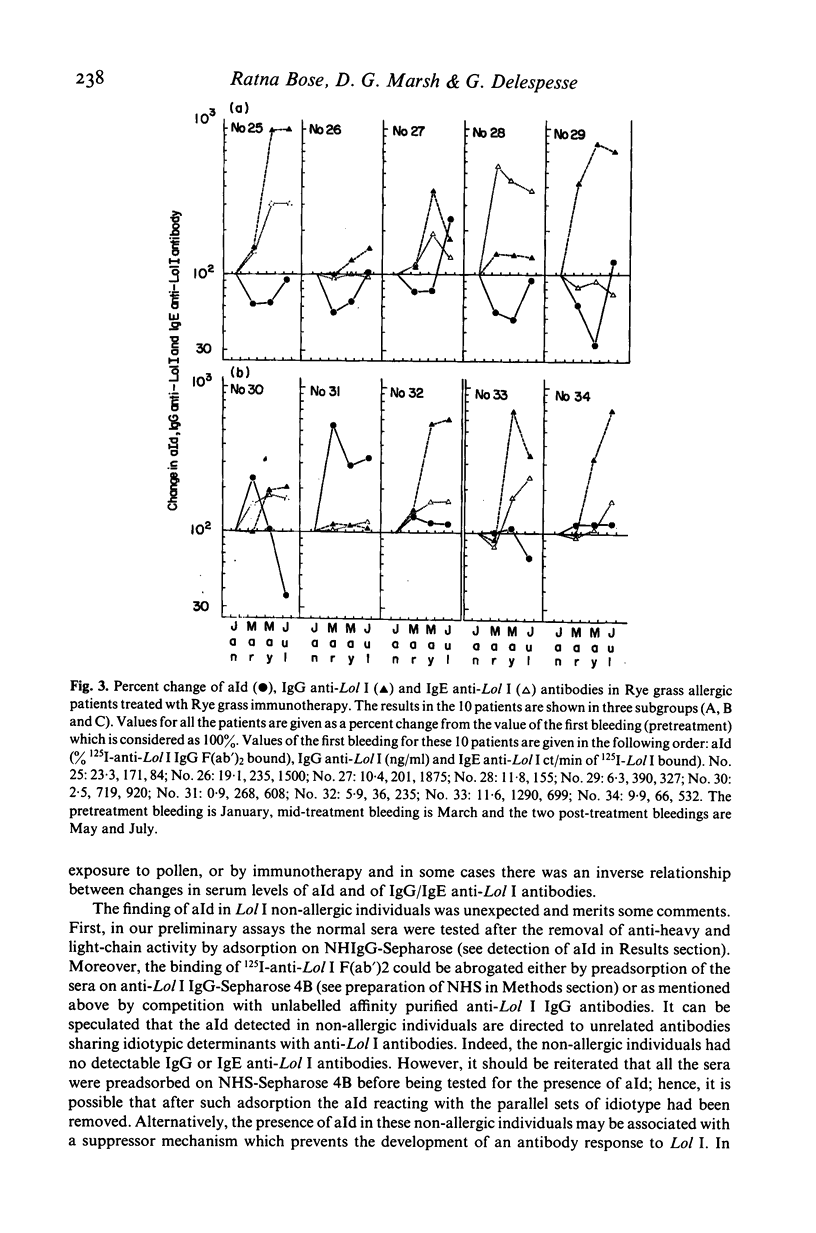
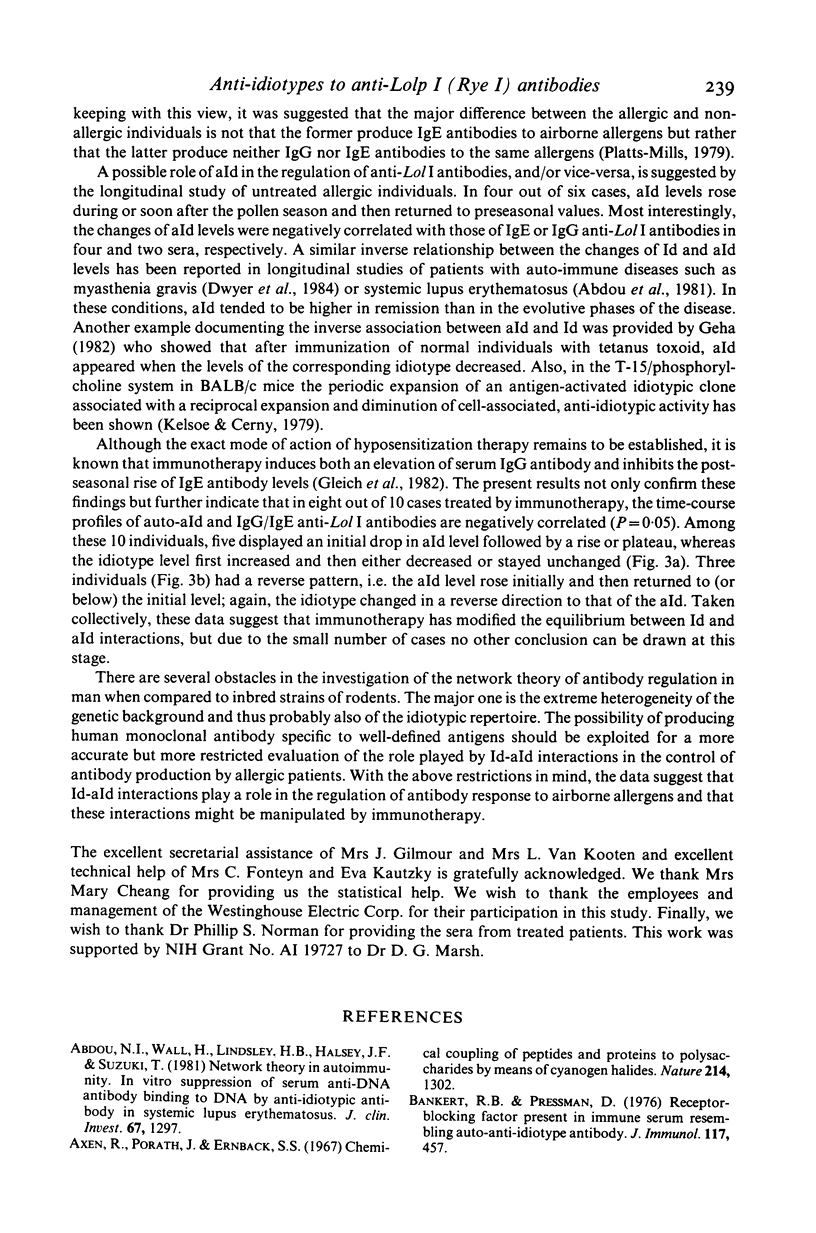
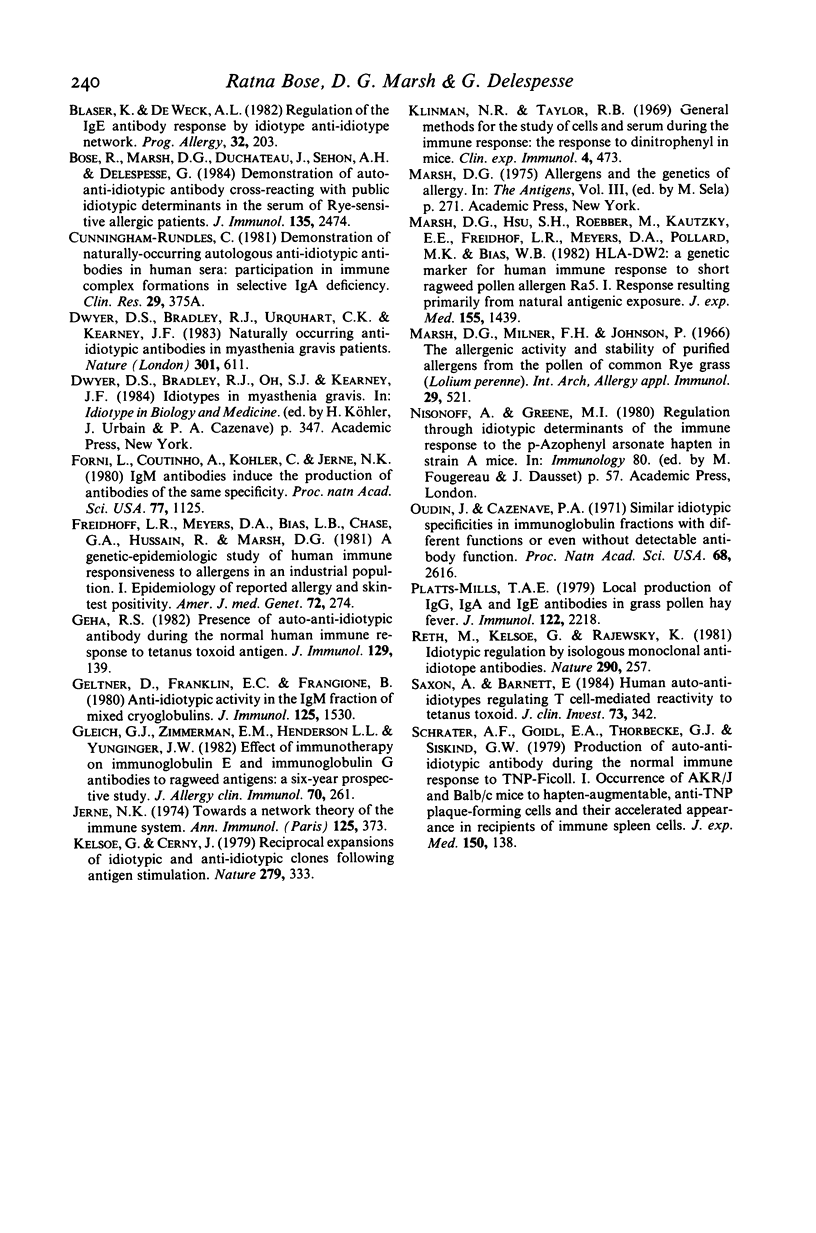
Selected References
These references are in PubMed. This may not be the complete list of references from this article.
- Abdou N. I., Wall H., Lindsley H. B., Halsey J. F., Suzuki T. Network theory in autoimmunity. In vitro suppression of serum anti-DNA antibody binding to DNA by anti-idiotypic antibody in systemic lupus erythematosus. J Clin Invest. 1981 May;67(5):1297–1304. doi: 10.1172/JCI110158. [DOI] [PMC free article] [PubMed] [Google Scholar]
- Axén R., Porath J., Ernback S. Chemical coupling of peptides and proteins to polysaccharides by means of cyanogen halides. Nature. 1967 Jun 24;214(5095):1302–1304. doi: 10.1038/2141302a0. [DOI] [PubMed] [Google Scholar]
- Bankert R. B., Pressman D. Receptor-blocking factor present in immune serum resembling auto-anti-idiotype antibody. J Immunol. 1976 Aug;117(2):457–462. [PubMed] [Google Scholar]
- Blaser K., de Weck A. L. Regulation of the IgE antibody response by idiotype-anti-idiotype network. Prog Allergy. 1982;32:203–264. [PubMed] [Google Scholar]
- Bose R., Marsh D. G., Duchateau J., Sehon A. H., Delespesse G. Demonstration of auto-anti-idiotypic antibody cross-reacting with public idiotypic determinants in the serum of rye-sensitive allergic patients. J Immunol. 1984 Nov;133(5):2474–2478. [PubMed] [Google Scholar]
- Dwyer D. S., Bradley R. J., Urquhart C. K., Kearney J. F. Naturally occurring anti-idiotypic antibodies in myasthenia gravis patients. Nature. 1983 Feb 17;301(5901):611–614. doi: 10.1038/301611a0. [DOI] [PubMed] [Google Scholar]
- Forni L., Coutinho A., Köhler G., Jerne N. K. IgM antibodies induce the production of antibodies of the same specificity. Proc Natl Acad Sci U S A. 1980 Feb;77(2):1125–1128. doi: 10.1073/pnas.77.2.1125. [DOI] [PMC free article] [PubMed] [Google Scholar]
- Geha R. S. Presence of auto-anti-idiotypic antibody during the normal human immune response to tetanus toxoid antigen. J Immunol. 1982 Jul;129(1):139–144. [PubMed] [Google Scholar]
- Geltner D., Franklin E. C., Frangione B. Antiidiotypic activity in the IgM fractions of mixed cryoglobulins. J Immunol. 1980 Oct;125(4):1530–1535. [PubMed] [Google Scholar]
- Gleich G. J., Zimmermann E. M., Henderson L. L., Yunginger J. W. Effect of immunotherapy on immunoglobulin E and immunoglobulin G antibodies to ragweed antigens: a six-year prospective study. J Allergy Clin Immunol. 1982 Oct;70(4):261–271. doi: 10.1016/0091-6749(82)90062-8. [DOI] [PubMed] [Google Scholar]
- Jerne N. K. Towards a network theory of the immune system. Ann Immunol (Paris) 1974 Jan;125C(1-2):373–389. [PubMed] [Google Scholar]
- Kelsoe G., Cerny J. Reciprocal expansions of idiotypic and anti-idiotypic clones following antigen stimulation. Nature. 1979 May 24;279(5711):333–334. doi: 10.1038/279333a0. [DOI] [PubMed] [Google Scholar]
- Klinman N. R., Taylor R. B. General methods for the study of cells and serum during the immune response: the response to dinitrophenyl in mice. Clin Exp Immunol. 1969 Apr;4(4):473–487. [PMC free article] [PubMed] [Google Scholar]
- Marsh D. G., Hsu S. H., Roebber M., Ehrlich-Kautzky E., Freidhoff L. R., Meyers D. A., Pollard M. K., Bias W. B. HLA-Dw2: a genetic marker for human immune response to short ragweed pollen allergen Ra5. I. Response resulting primarily from natural antigenic exposure. J Exp Med. 1982 May 1;155(5):1439–1451. doi: 10.1084/jem.155.5.1439. [DOI] [PMC free article] [PubMed] [Google Scholar]
- Marsh D. G., Milner F. H., Johnson P. The allergenic activity and stability of purified allergens from the pollen of common rye grass (lolium perenne). Int Arch Allergy Appl Immunol. 1966;29(6):521–535. doi: 10.1159/000229739. [DOI] [PubMed] [Google Scholar]
- Oudin J., Cazenave P. A. Similar idiotypic specificities in immunoglobulin fractions with different antibody functions or even without detectable antibody function. Proc Natl Acad Sci U S A. 1971 Oct;68(10):2616–2620. doi: 10.1073/pnas.68.10.2616. [DOI] [PMC free article] [PubMed] [Google Scholar]
- Platts-Mills T. A. Local production of IgG, IgA and IgE antibodies in grass pollen hay fever. J Immunol. 1979 Jun;122(6):2218–2225. [PubMed] [Google Scholar]
- Reth M., Kelsoe G., Rajewsky K. Idiotypic regulation by isologous monoclonal anti-idiotope antibodies. Nature. 1981 Mar 19;290(5803):257–259. doi: 10.1038/290257a0. [DOI] [PubMed] [Google Scholar]
- Saxon A., Barnett E. Human auto-antiidiotypes regulating T cell-mediated reactivity to tetanus toxoid. J Clin Invest. 1984 Feb;73(2):342–348. doi: 10.1172/JCI111218. [DOI] [PMC free article] [PubMed] [Google Scholar]
- Schrater A. F., Goidl E. A., Thorbecke G. J., Siskind G. W. Production of auto-anti-idiotypic antibody during the normal immune response to TNP-ficoll. I. Occurrence in AKR/J and BALB/c mice of hapten-augmentable, anti-TNP plaque-forming cells and their accelerated appearance in recipients of immune spleen cells. J Exp Med. 1979 Jul 1;150(1):138–153. doi: 10.1084/jem.150.1.138. [DOI] [PMC free article] [PubMed] [Google Scholar]


